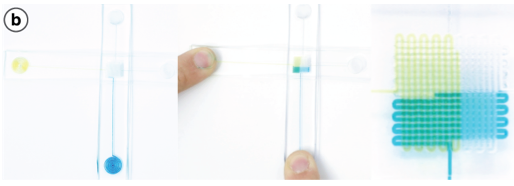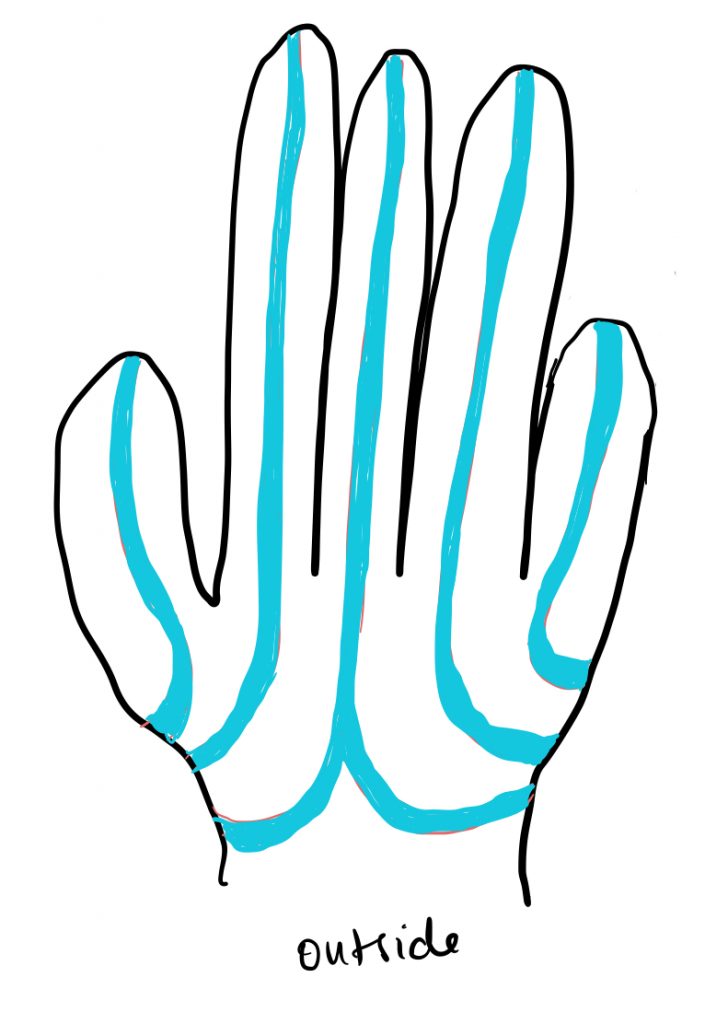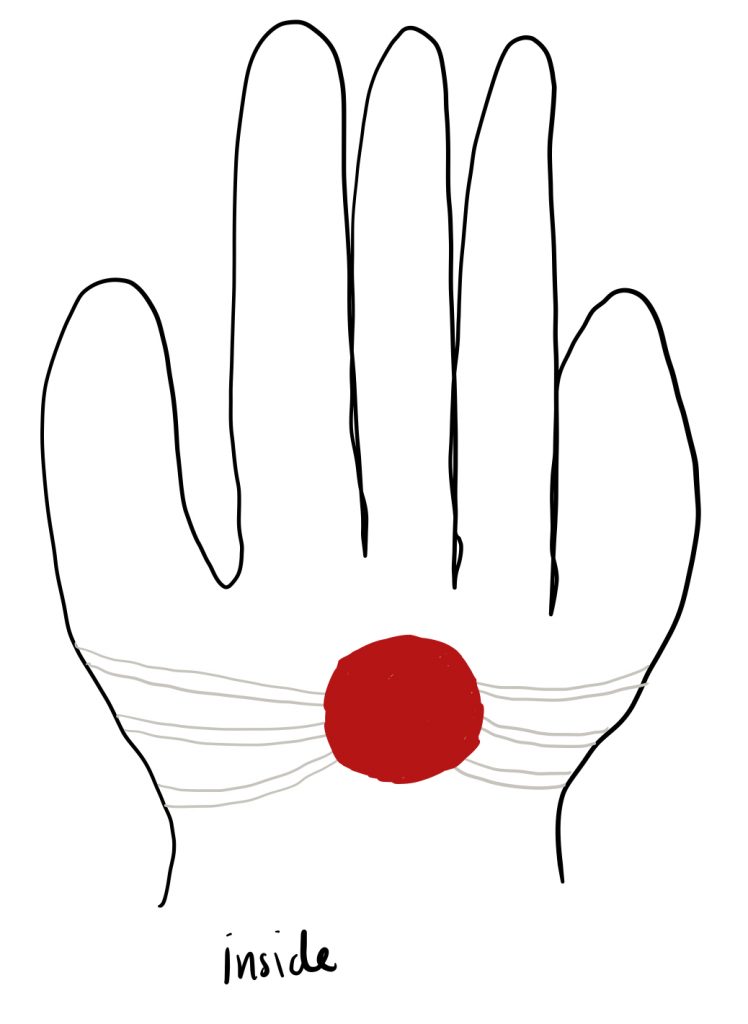Using soft robotics, I will explore how an audience reacts to a garment that changes color. Drawing inspiration from MIT’s Venous Materials paper, I will create a silicone mold of a glove or mitten that can fit over my hand, with a dark liquid repository in the center of the palm. Additionally, there will be liquid channels with a lighter color liquid already inside the channels. These channels will be running down the glove or mitten in the position where the fingers would be. When the fist is made, the liquid repository would have pressure applied to it, and thus the dark liquid would flow through the channels connected to the repository and overlay the lighter color liquid so that the patterns on the glove/mitten now seem darker and the garment has taken on a different look.
This would be building upon the original Venous Materials work because I would explore how the concept of fluid channels can be used in a garment, I would be designing a brand new layout for the channels, and I would be experimenting with “reversibility of colors” in that there would be fluid already in an underlying channel before I released darker fluid in an overlapping channel, thus changing the ‘color’ of the channel from light to dark, and then back to light again when the pressure is released.




The goal is to develop a reversibly color-changing garment, and I will start by emulating the ‘overlay’ experiment from the Venous Materials paper. I would want to create a single rectangle of silicone with layers of channels. There would be a light colored liquid at the bottom-most level channel, and the channel on top would be the one connected to a liquid repository with a darker colored liquid.

My goal would be to see if I can cause the temporary “darkening” of the channels by pressing the liquid repository. I would then translate my results to a model of a silicone glove with strategically placed channels to enable this ‘darkening’. The most difficult part of this experiment will be designing the channels of the glove appropriately to give the desired ‘darkening’ effect and make it as dramatic as possible. I must either try to obtain the software used to design the channels in the Venous Materials paper, or experiment with different channel layouts after conducting the basic experiment.
The materials I would need to start are PDMS, a CO2 laser cutter and engraver for fabricating the layers, and Ecoline water-based inks. I would later need transparent or translucent white fabric to sew over the silicone.
Citation:
Hila Mor, Tianyu Yu, Ken Nakagaki, Benjamin Harvey Miller, Yichen Jia, and Hiroshi Ishii. 2020. Venous Materials: Towards Interactive Fluidic Mechanisms. In CHI Conference on Human Factors in Computing Systems (CHI ’20), April 25–30, 2020, Honolulu, HI, USA. ACM, New York, NY, USA 15 Pages. https://doi.org/10.1145/3313831.3376129